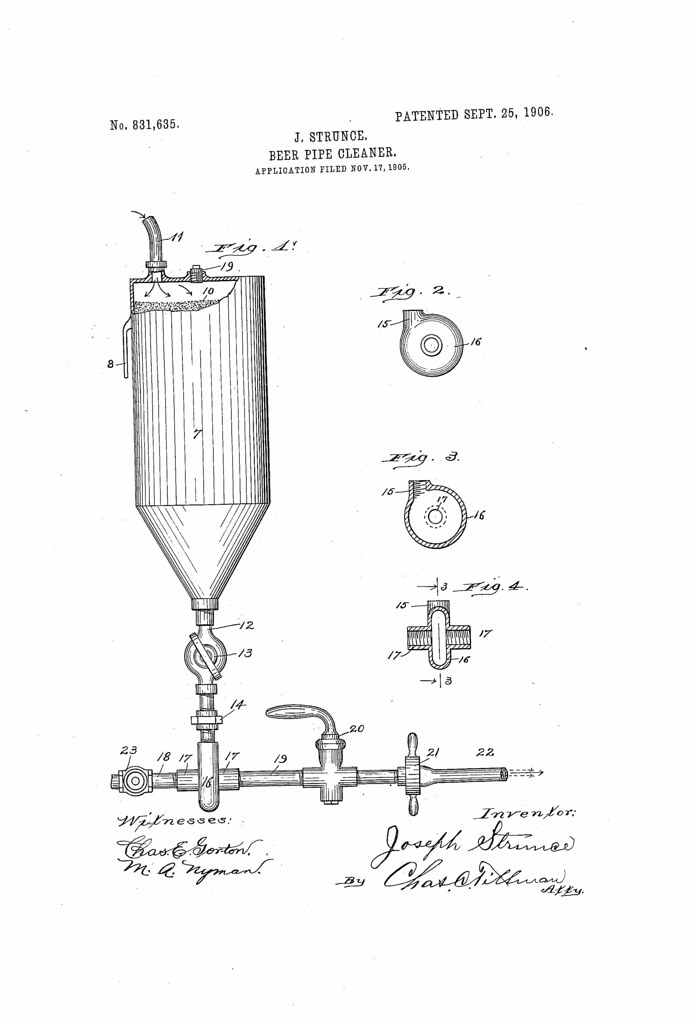
Wednesday’s ad is for Miller High Life, from 1944. In this ad, from the back of a baseball game program, a batter is arguing with two umpires. I’m sure he’s not going to get anywhere, since “There’s No Arguing About ….” it.

By Jay Brooks
By Jay Brooks

Today in 1993, US Patent 5248062 A was issued, an invention of Vincent G. Hillard, for his “Beer Keg Tap Apparatus.” Here’s the Abstract:
A tap member is arranged with a threaded lid directed into engagement with an upper end of the tap structure configured as a cylindrical housing, including a cavity receiving a compressed gas canister there within. Upon projection of the lid into the housing, the canister is pierced directing compressed gas from the canister into an underlying beer keg, whereupon beer is dispensed through a dispensing conduit.
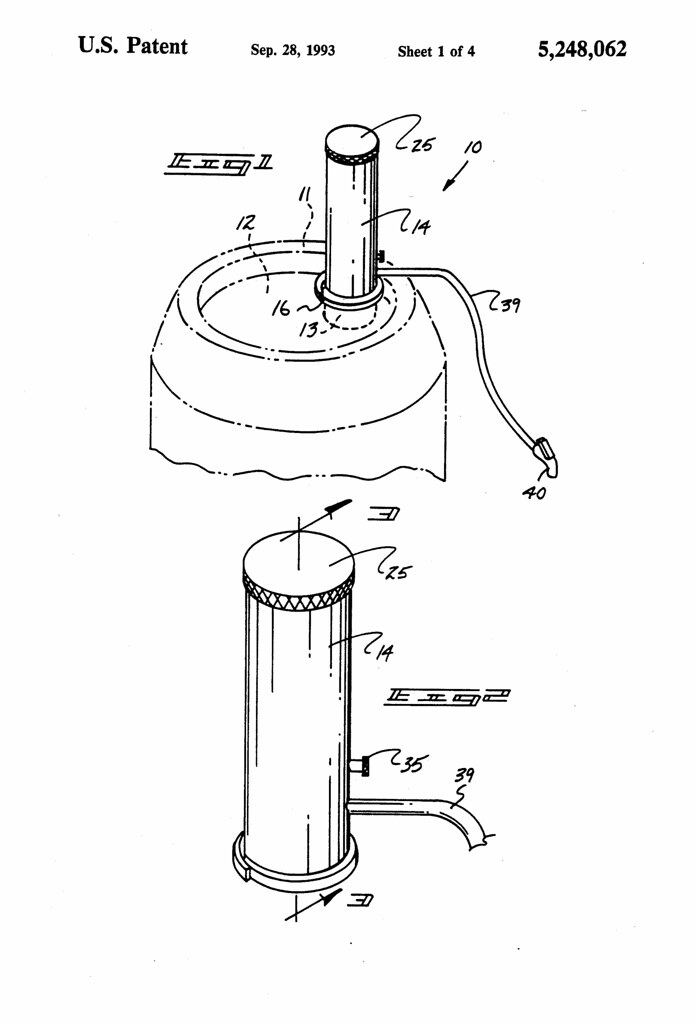
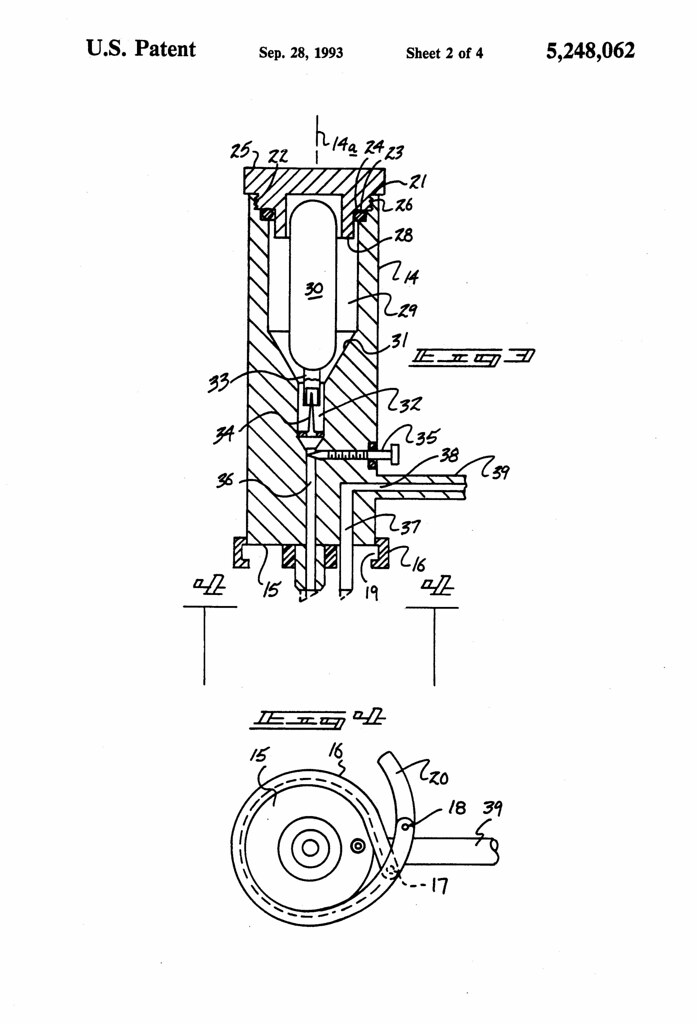
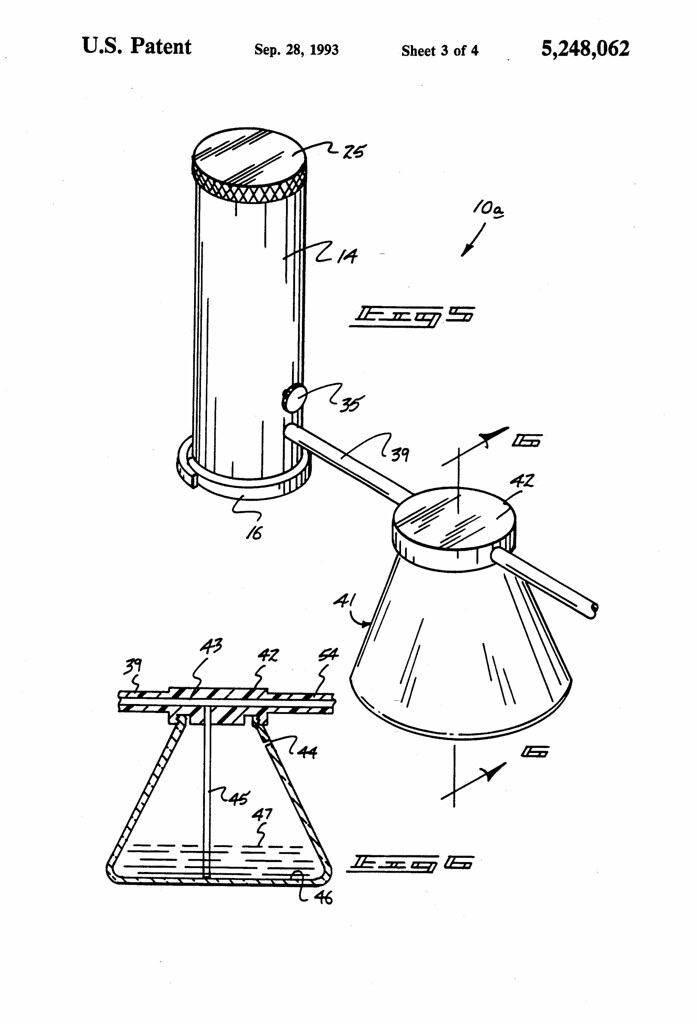
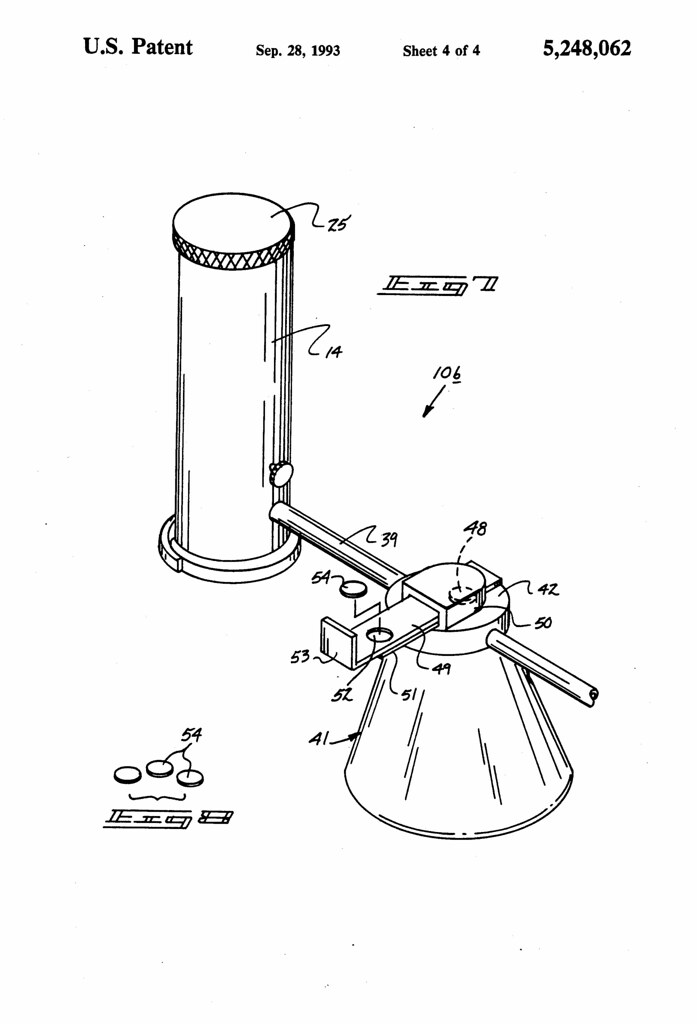
By Jay Brooks

Tuesday’s ad is for Miller High Life, from 1942. In this ad, from the back of a baseball game program, a player swings, and it doesn’t matter if he makes contact. Either way, he gets beer since it’s a sure hit. I figured with just a few more games before the end of the season, that I’d got out this month with baseball ads.

By Jay Brooks

Today in 1983, US Patent 4406301 A was issued, an invention of Vincent J. Cerrato, for his “Keg-Tapping Structure.” Here’s the Abstract:
The invention contemplates removable structure to facilitate keg-tapping, and pressurized dispensing of liquid contents of the keg. A so-called Barnes neck forms part of the keg and has a bore with an elastomeric ring seal and flange at its lower end, and a valve-and-tube subassembly is inserted through the neck, to the point of valve-body compression of the seal, when secured by a removable retaining ring. In the course of such insertion, one or more radially inward lugs on the neck flange track corresponding slot formations in the subassembly. Each such slot formation has a first upward longitudinal course, leading to an angular bayonet-like offset course, and then to a second upward longitudinal course. The location of the angular offset is such that the valve body cannot compressionally load the seal ring in the absence of the partial rotation needed to develop lug alignment with the second upward longitudinal course.
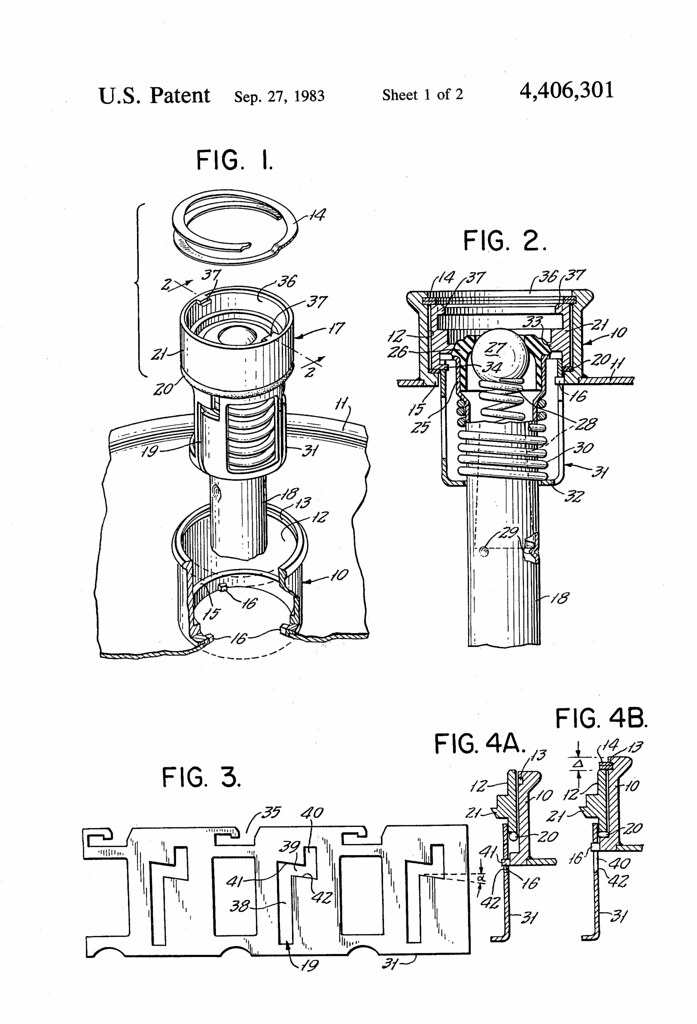
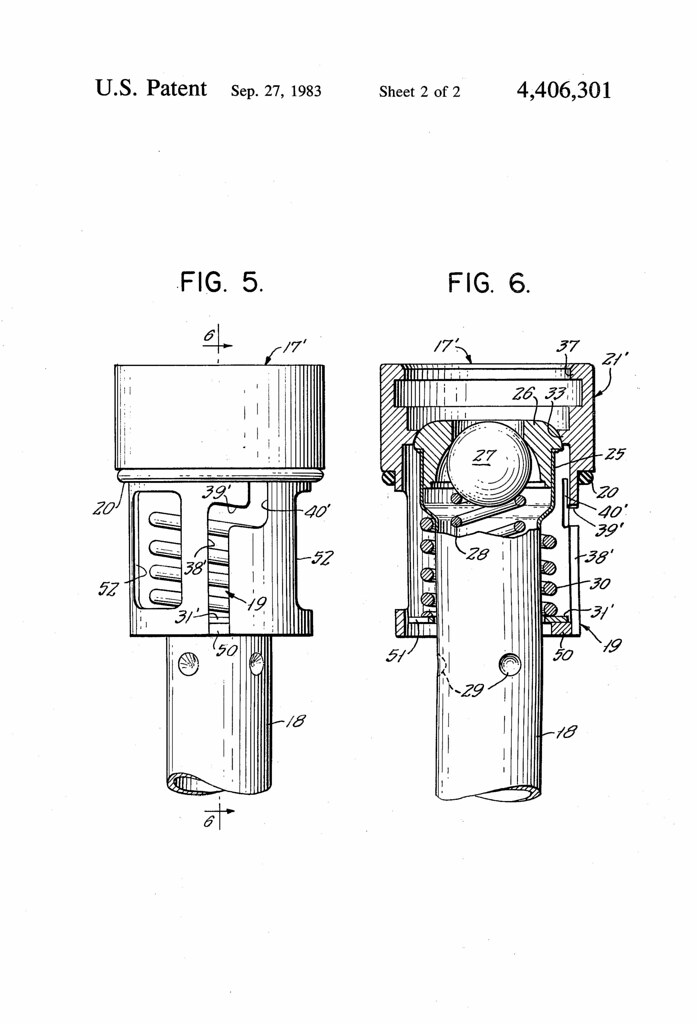
By Jay Brooks

Today in 2005, US Patent D510083 S1 was issued, an invention of Kenneth L. Kasden, for his “Beer Bottle-Like Musical Speaker.” There’s no Abstract, although in the description it includes these claims:
The ornamental design for a beer bottle-like musical speaker, as shown and described.
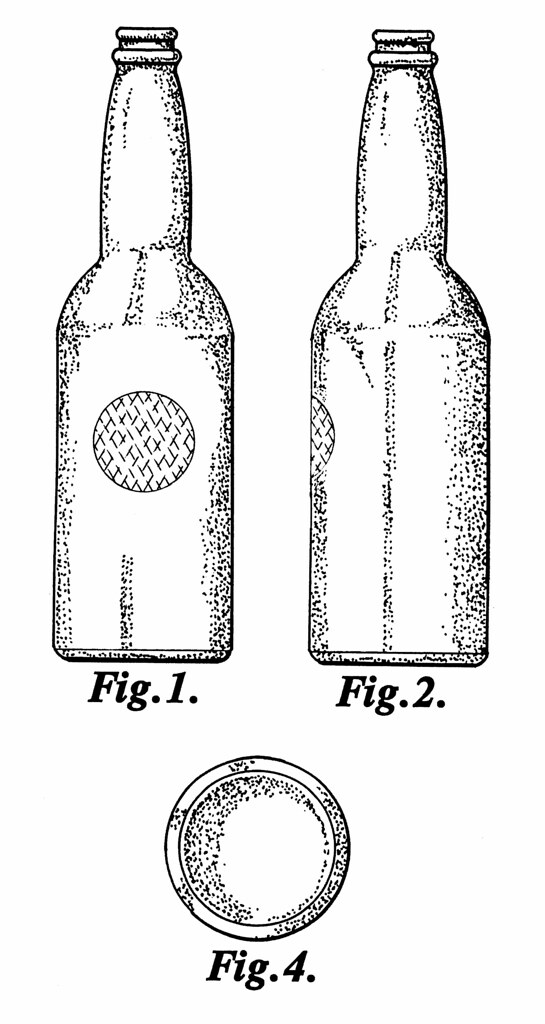

By Jay Brooks

Monday’s ad is for Miller High Life, from 1913, published in the Telegraph Herald on July 2, 1913. In this curious ad, titled “The Result of Good Brewing—,” the scene is a parade of Germany soldiers. Though it’s hard to read, toward the bottom it reads “High Life in Germany,” while to the left the Miller Girl has been inserted into the illustration as if she’s watching the parade.
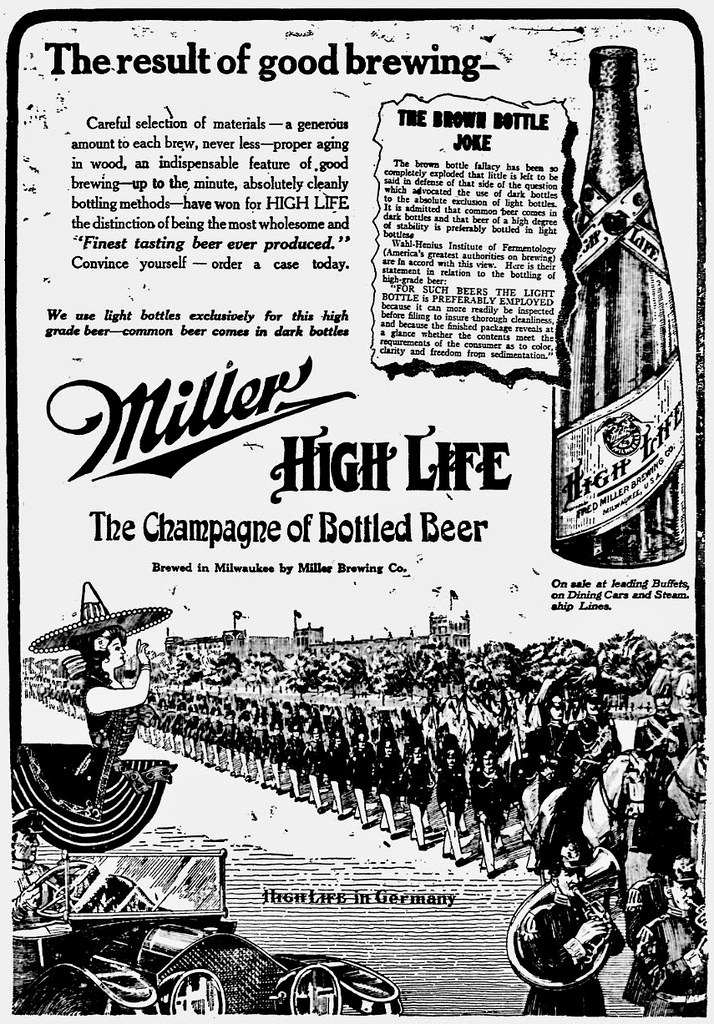
But even more curious about this ad is the inset box, “The Brown Bottle Joke,” where they try to explain why using a clear bottle is actually better than using brown, and they do so without even mentioning why brown is preferred or indeed anything about what effect light would have on the beer after bottling.
The brown bottle fallacy has been so completely exploded that little is left to be said in defense of that side of the question which advocated the use of dark bottles to the absolute exclusion of light bottles. It is admitted that common beer comes in dark bottles and that beer of a high degree of stability is preferably bottled in light bottles.
Wahl-Henius Institute of Fermentology (America’s greatest authorities on brewing) are in accord with this view. Here is their statement in relation to the bottling of high-grade beer:
“FOR SUCH BEERS THE LIGHT BOTTLE is PREFERABLY EMPLOYED because it can more readily be inspected before filling to insure thorough cleanliness and because the finished package reveals at a glance whether the contents meet the requirements of the consumer as to color, clarity and freedom from sedimentation.”
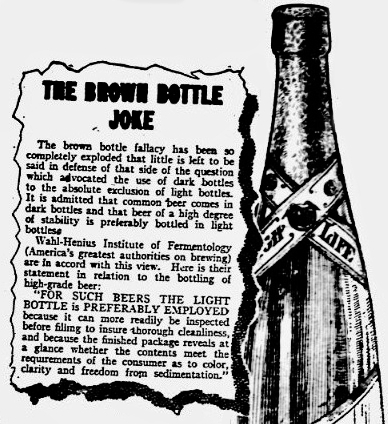
By Jay Brooks

Today in 1972, US Patent 3693828 A was issued, an invention of Raymond H. P. Kneusel and Vinson S. Potts, assigned to Crown Cork & Seal Co., for their “Seamless Steel Containers.” Here’s the Abstract:
A steel beverage or beer can of the seamless type having a unitary body including seamless side walls and an integral bottom with an end double seamed to the top of the side walls. The bottom comprises an outer frustoconical surface extending downwardly and inwardly from the side walls, an annular bead for supporting the can, an inner frustoconical surface extending upwardly and inwardly from the annular supporting bead, and a recessed domed central panel extending inwardly and upwardly along the axis of the can from the second frustoconical surface.
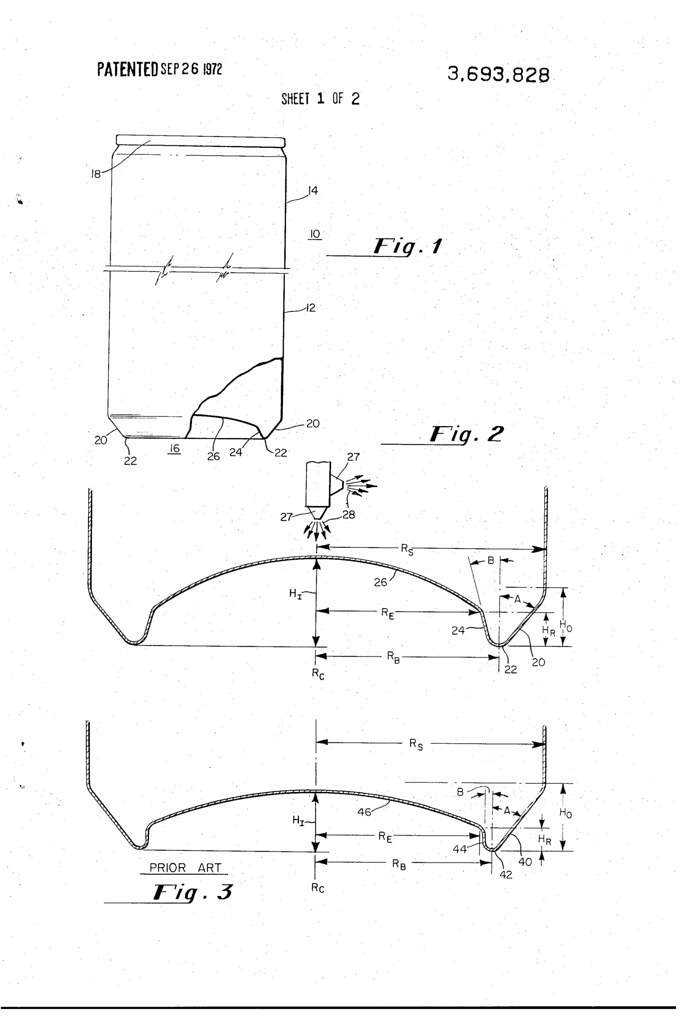
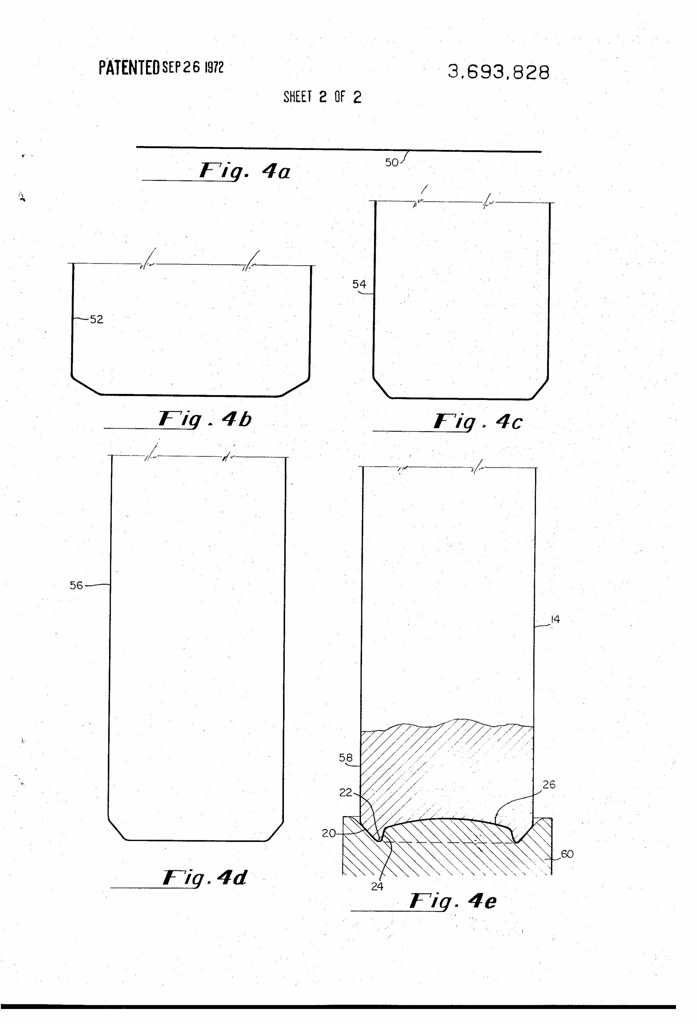
By Jay Brooks

Sunday’s ad is for Miller High Life, from 1945. In this ad, it’s very simple, showing a detailed view of La Salle Street in Chicago, Illinois, with no text apart from the location and then the name of the beer below. I don’t know if this was part of a series showing other locations or if there’s some special significance to this street in 1945. This would have been toward the end of the Second World War, so perhaps that has something to do with, but in the end there are more questions than answers, but it’s still an oddly comforting ad.
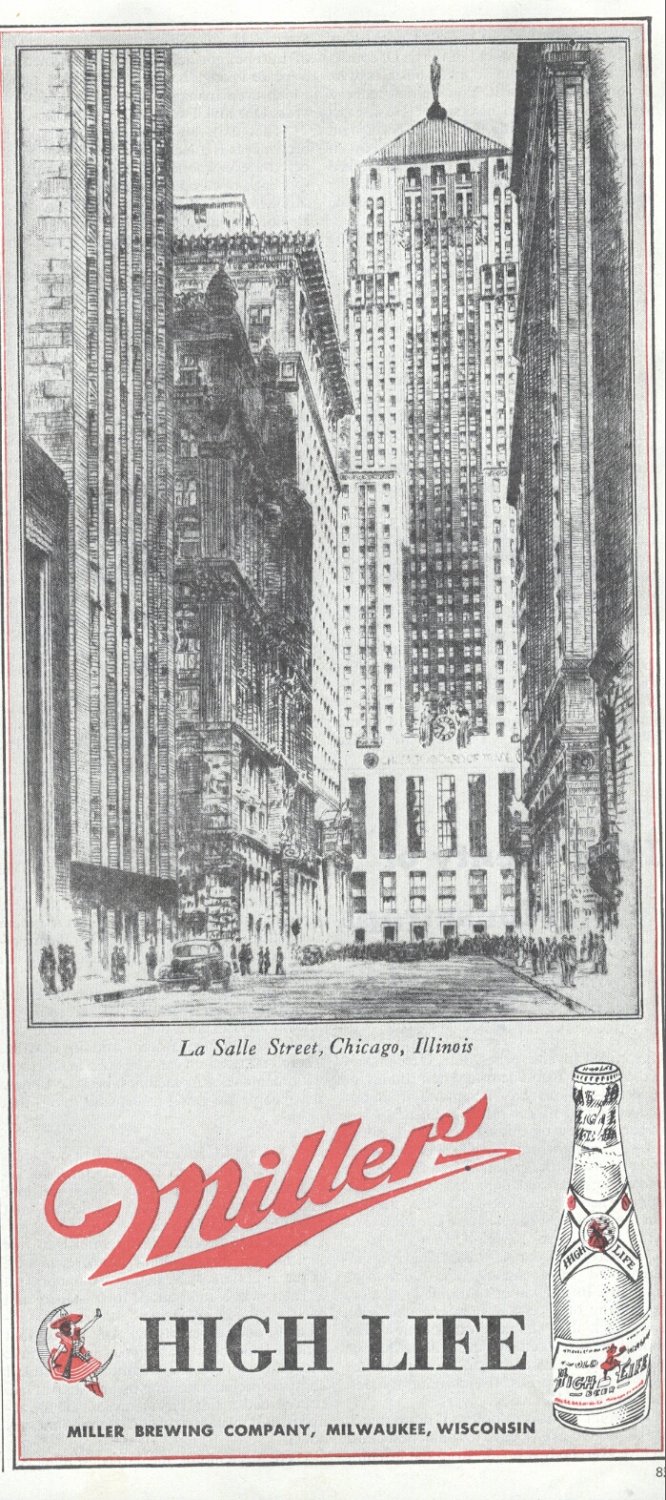
By Jay Brooks

Today in 1973, US Patent 3760968 A was issued, an invention of S. Amberg, C. Heyne, and J. Meincer, assigned to Owens Illinois Inc., for their “Composite Container Article” Here’s the Abstract:
The invention disclosed relates to an improved container article for pressurized products, such as beer, beverages, and the like, which is made from a glass bottle or jar and a sheet of shrinkable plastic material pre-decorated as flat sheet, then wrapped on a mandrel to a sleeve that is telescopically inserted over the major side wall of the bottle so that a lower marginal end thereof overhangs the bottom end of the bottle. The sleeve may be of a pre-foamed or non-foamed plastic material and is shrunken in situ by heat so that it fits snugly on the bottle surface and conforms to the body around its shoulder, side wall and its lower corner radius or heel and onto the bottom end of the bottle protecting the glass against surface damage, providing a pre-printed label or decoration for the bottle and covering the bearing surface and lower corner radius of the bottle protecting those areas plus affording coaster protection to furniture or like surfaces. The orientation of the plastic is major on the peripheral dimension of the sleeve and minor on the axial dimension. Antistatic compounds are applied to the surface opposite the printed surface also priming the bottle for good cohesion of the sleeve. The plastic sleeve has a skin depth differential, the thicker skin being adjacent the bottle.
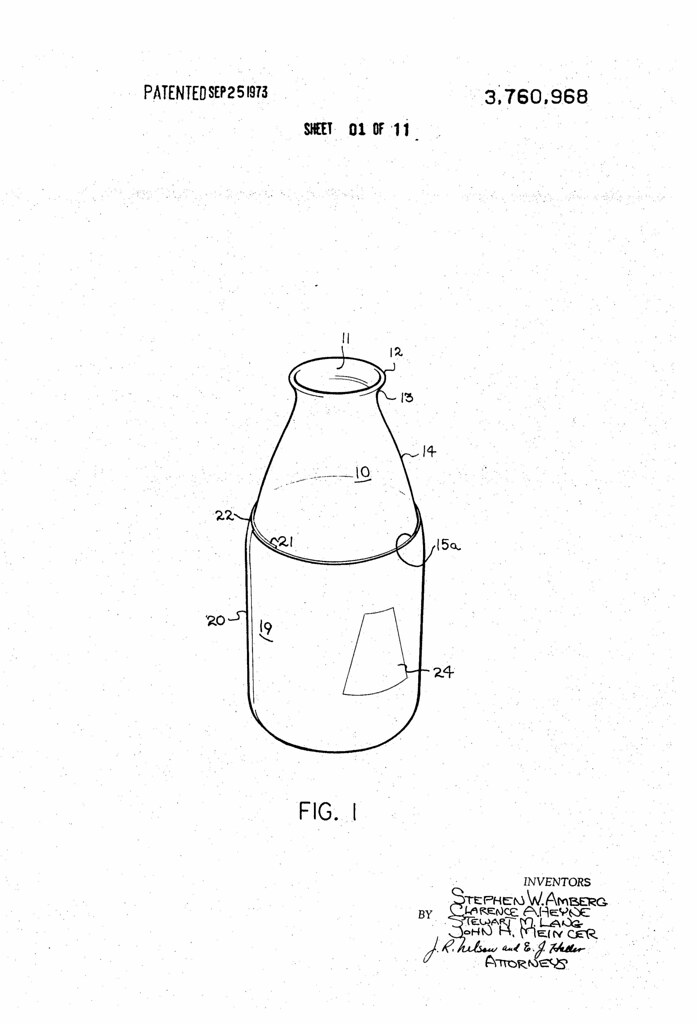
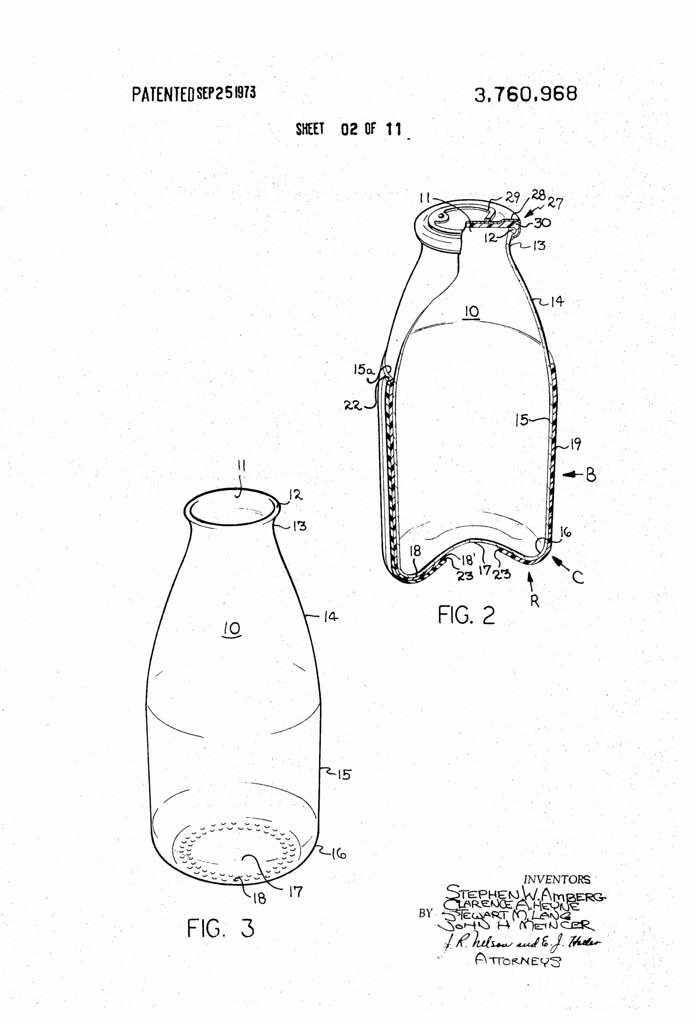
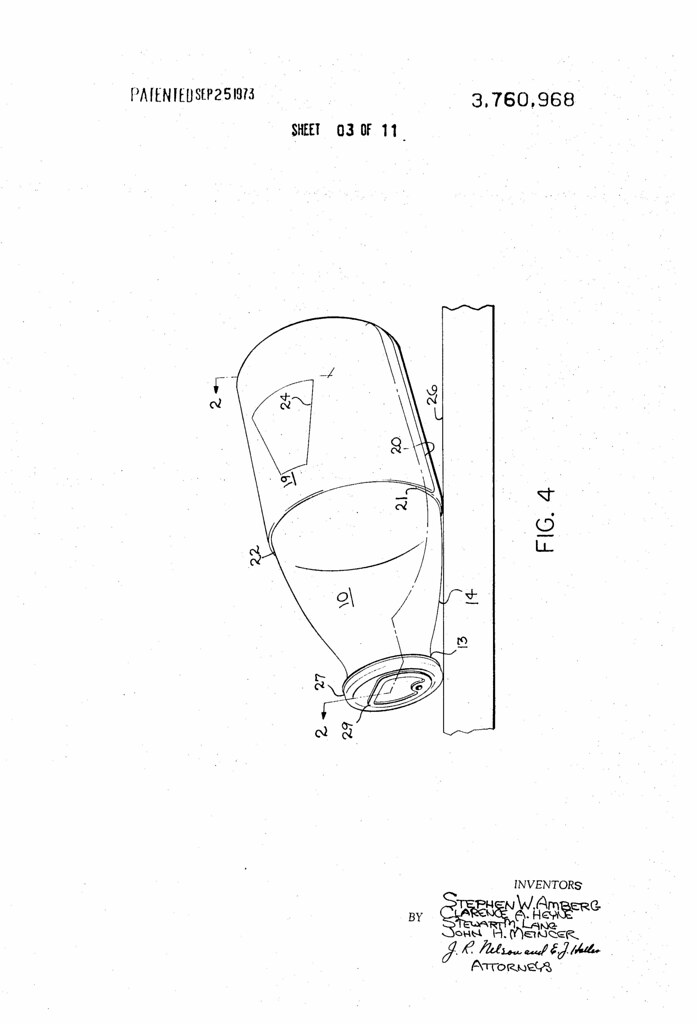
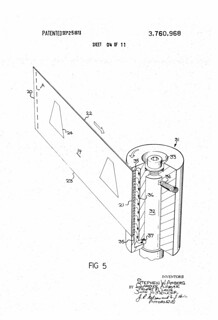
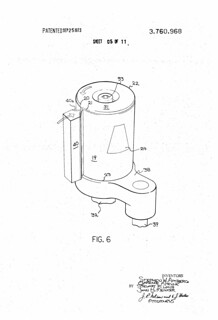
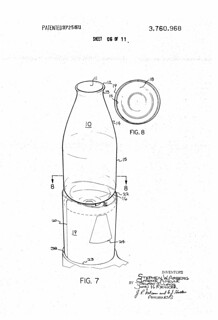


By Jay Brooks

Today in 1906, US Patent 831635 A was issued, an invention of Joseph Strunce, for his “Beer Pipe Cleaner.” There’s no Abstract, although in the description it includes these claims:
This invention relates to certain new and useful improvements in an apparatus to be used for cleaning pipes, and while it is more especially intended to be employed for cleaning beer-pipes, such as are used for drawing beer from kegs, casks, or vessels, yet it is applicable for cleaning pipes used for other purposes; and it consists in certain peculiarities of the construction, novel arrangements, and operation of the various parts thereof, as will be hereinafter more fully set forth and specifically claimed.
